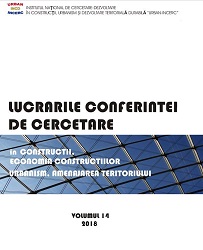Rentabilitatea izolării termice a clădirilor. materiale tradiţionale versus materiale inovative
Rentability of thermal insulation of buildings. Traditional materials versus innovative materials
Author(s): Adrian-Alexandru Ciobanu, Aurelia Bradu, Constantin Miron, Alina Cobzaru, Monica Cherecheş,, Ionel PUSCASU
Subject(s): Architecture
Published by: INCD URBAN-INCERC
Keywords: insulation; vacuum insulation panels; rentability; thermal resistance
Summary/Abstract: The current context regarding the implementation of the European directives on energy efficiency of buildings in the context of sustainable development calls into question a frequently encountered situation in the current use of heat insulating materials, namely what kind of material is more cost-effective for thermal insulation of building envelopes: Classical materials or materials with high thermal performance? The paper presents a comparative study between two solutions of thermal rehabilitation of the facade of a building block. A first proposed and analyzed solution consisted in the thermal insulation of the facade with 10 cm extruded polystyrene and the second solution involved the use of a high-performance thermal insulation material, known in the literature as Vacuum Insulating Panels (VIP). In order to reduce the energy consumption required for the heating of a building and its associated costs, isolation of buildings is a necessary measure, with an efficient insulation saving even up to 50% of the heating costs. The paper presents, through the study case, that the main advantage of the thermal insulation solution with innovative materials, compared to thermal insulation classic materials, namely a high net thermal resistance, which can be countered by questioning the profitability of the solutions. The adoption of an efficient thermal insulation solution from hygrothermal and also from economic point of view, it should be considered case to case, taking into account the required insulation level, the amount allocated and the amortization value of the investment.
- Page Range: 107-110
- Page Count: 4
- Publication Year: 2018
- Language: Romanian
- Content File-PDF

